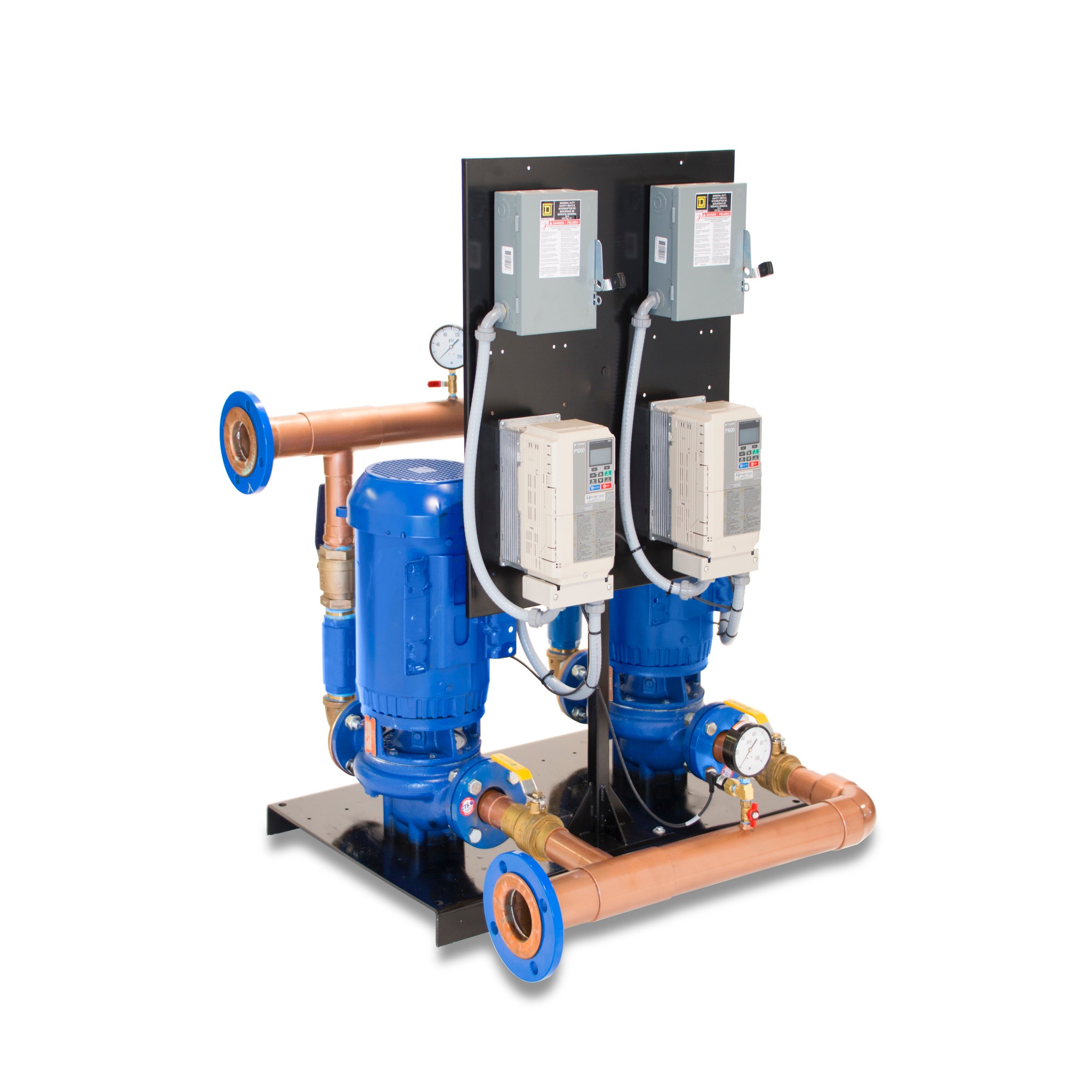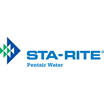
August 14th, 2018
In New York City, variable speed domestic water booster systems are not only ideal to have but they are now part of the electrical code in order to save electricity. The first person in NYC who spoke at ASSE/ASPE professional engineer meetings to push this topic (and was nearly laughed out of the room) was myself, John Callaghan. Obviously things have changed. I do recall the first thing I said as a speaker, and that was “pumps have not changed since 1960s, but the way you control them has changed significantly.” And once again this has held true.
The original Variable Speed Drives required a “brain” called a Programmable Logic Controller (PLC). This box does what you think it would do, you program it and it handles the logic of when a pump starts, how fast the pump goes, and when a pump decides to bring on another pump. It also decides when to shut one pump off when two are running and decides how fast the pumps should be running. This was new technology and, therefore, was viewed with skepticism. As a result, engineers wrote specifications which said if your pump control system relies on a PLC, you must have old school relay logic backup. This meant if the PLC failed then relay logic took over.
PLCs are electronic versions of relays– fantastic when they are new and fantastic when they are programmed by an expert. They were used in all industries. However, if you were in the pump business, what do you think the odds were that you had purchased a high quality PLC and that you hired a highly qualified professional to program it? And what do you think the odds were that that professional still works for the company eight years later, and what are the odds that the required cable that fit the computer and fits the PLC is still around somewhere when you have trouble? These original PLCs served their function but have now been technologically surpassed by the new smart drives. This shift in technology is similar to other situations– how many of you have used floppy disks or still use them today? How many people still use CDs? Times change and the way we control pumps has also changed.
My point here is that when specifying a Variable Speed Drive, make sure you specify a smart drive. It does not require a separate PLC or “Joe” Programmer (who might have left the company to build boats for a living). Smart drives communicate with each other and base their staging or cascading upon a very simple rule– when the first pump approaches full speed, the assumption is that it is approaching its limits of providing water at a steady pace and is not able to keep up with your building’s water demands. At this point, help is needed from the second drive/pump. With smart drives, you have the option of when to bring on the second pump. In the USA, 60 hz is considered full speed. Smart drives allow you to decide and adjust when you want the second pump to start based upon speed. To stop short cycling of the second pump, the factory default setting starts the second pump when the first pump reaches 59 hz for 10 seconds based upon the assumption that the pump has reached its full capacity. That time frame and speed are adjustable too. I feel this is very smart. The key is that you do not specify or allow anyone specified to use a dumb drive which requires a PLC. My competitors laugh at me for spending $800.00 on a 5 hp drive. Instead, they use a cheap drive which costs less than $150.00 but then they need a PLC and “Bob” or “Joe” to program them, Bob may be great, Joe…who knows? Then we find out Bob got a great job at Boeing, because of his skills, so this “big” company has only “Joe” to rely on. As a specifying engineer, I would not be very happy about that, and neither should you.
I invite you to come to my shop where I will show you a 50 gallon drum of water connected with good drives but dumb PLCs. I am happy to demonstrate the value of smart drives. If you take anything from this article, I hope that you will always specify a domestic water system which uses SMART DRIVES.
I know of five manufacturers who make them. When choosing one of the five, I knew it was a big decision. I called all five to see which would hope the most in customer service when I had an emergency. Four of the five said I would need to speak to a product specialist. Larry was on vacation, Moe was in the bathroom, Curly was out to lunch, and Shemp was away from his desk. When I called Yaskawa, I discovered there were 15-20 degreed engineers that were available. Additionally, I had heard rumors that there was a room that had models of every drive they had installed where the engineers could go to in order to personally go through the keypad with me and wiring. I don’t base and build my company on rumors so I flew out to the company with one of the best factory reps in the business and I met the people, I saw the room, and I realized that the rumors were facts. As a side note, I was blown away with their other division which is robotics. The fact is Yaskawa has 25 engineers who are degreed engineers, and they always hire new ones and the better ones train the new ones.
Trust me when I tell you, these people in Wisconsin, where every drive is assembled, are the best in the business. I understand why smaller companies use dumb drives for a 5 hp motor: the drive costs about $100 while the Yaskawa drive costs $700, but the long term benefits outweigh the initial costs. I made my decision to use Yaskawa exclusively in all my systems because my reputation is based upon performance and reliability. Since making that decision, I have sold over 800 drives. Of those, there have only been four failures. Three were due to water leakage from above which was not covered and the fourth was installed in a hot room during the summer with heaters on and no explanation was offered to why it failed but the company covered over half the replacement cost and sent a brand new drive instead of attempting to fix the original. On every system I build, I use the Yaskawa IQ pump 1000 micro and standard drive. I set the rotation properly at my shop and then test each system before shipping out to the intended site to ensure that the pumps are going to run the correct rotation when installed on site by plumbers no matter what.
Going back to one of my original comments regarding variable speed drives, which were made at joint ASSE/ASPE meeting when I opened with my opening comment, “Pumps are dumb, the way you control them isn’t. It is smart and getting smarter.” These Yaskawa drives have brought smart to a new level. Be smart– think smart drives.
john@callaghanpump.com,
eileen@callaghanpump.com,
dan@callaghanpump.com,
sales@callaghanpump.com,
service@callaghanpump.com












